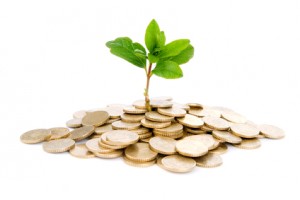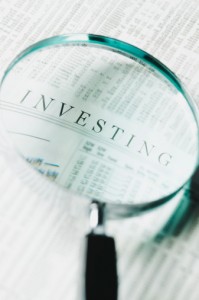Further Notes & Valuation Explanation
Based on the calculation above there are 2 important dynamic areas that require our further attention and explanation. They are an integral part of the calculation and just a small adjustment can have a significant impact on the overall Intrinsic Value outcome. These variables are…
1. Estimated Future Growth Rate: Determines the future growth rate of the company over the next 10 years. It is an impossibly difficult number to get right. We can look at the historic growth of the company and use that number OR we can use the existing (last few quarters) growth rate OR we can use our future projected growth rate based on our understanding of the fundamental factors, the economy, company products and so forth.
Whatever your decision might be, understand that you are somewhat guessing here. The future is fuzzy. In 10 years the company might be collapsing with negative growth rates or it might be growing at an
+40% rate due to new product introduction. I often find it helpful to concentrate on the historic/average growth rate and then reduce it by a few percentage points to reduce Intrinsic Value output. This give me a little bit more margin of safety and a little bit more room if I have made a mistake.
2. Average P/E Rate: Very similar situation to the Estimated Future Growth Rate discussed above. While we can look at the average P/E ratio of the company over the last 10 years and perpetuate it over the next 10 years, in reality we have no idea what that ratio will be in 10 years. In Microsoft’s example above we have estimated that the P/E ratio will be at P/E= 15 in 10 years.
Yet, no analyst can say that with 100% certainty. Once again, the company might stumble over the next 10 years and find itself with a P/E Ratio of 5 OR it might surge its growth and find itself with a P/E Ratio of 35. Of course, that greatly impacts the Intrinsic value calculation and any perceived Margin of Safety that you have. As discussed in the previous point you are better off using historic/average P/E Ratio and then reducing it by a few points to give yourself some extra margin of safety.
It is often helpful to play around with different inputs for these variables based on your research. It will give you a range of Intrinsic Values (Best Case, Average, Worst Case) type of scenarios that can give you a better understanding of what the company is really worth.
For example, in Microsoft’s case you can have a range of ($45.15 I $54.82 I $59.28) based on playing around with a few numbers. These prices can act as markers for future developments. If the company is performing better than your original research has indicated, a higher range IV is appropriate. If worse, the lower one. In either case, you are at least aware that the Intrinsic Value is not an exact number, but a constantly changing one.
Once again, the formula above is a highly simplified version of a standard Intrinsic Value calculation. It can be made a lot more complicated for the purposes of being more precise. Plus, there are multiple ways to calculate the Intrinsic Value. Whatever the situation is I want you to understand that an Intrinsic Value number cannot be determined with exact precision. It is your best guess based on the past and the research that you have done.
Finally, some of the most important variables in the Intrinsic Value calculation rely on the future performance. While the future can be estimated, any such estimate is rarely accurate. As such, you must have a clear understanding that you are making predictions based on unknown future developments that might or might not be anywhere close to what you have originally estimated.
Did you enjoy this article? If so, please share our blog with your friends as we try to get traction. Gratitude!!!





